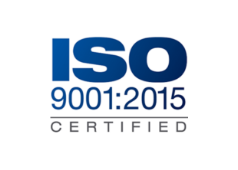ALE successfully influenced the design of the complex optic system and the optical support system from conceptual design phase through the detailed design phase
A World Leader In Advanced Electro-Optical Systems Had Been Chosen To Support The Development Of The Next-Generation Service Rifle By Designing The Fire Control System. ALE Was Selected To Assess The Logistic Impacts Of Various Design Alternatives And Support The Definition And Development Of An Effective Support System. ALE Applied Its Specialty Engineering Analysis Capabilities And Experience In Working Logistic Issues For Complex Systems To Accomplish The Following Tasks
- Participate In Trade Studies To Select The Optimum Design Alternative
- Participate In Design Reviews And Integrated Program Teams To Successfully Integrate Supportability Into The System Design Process
- Perform Reliability Analysis And Life Cycle Cost Analysis To Identify Key Performance And Cost Drivers
- Perform Failure Mode, Effects, And Criticality Analysis (FMECA) And System Safety Hazard Analysis To Identify Potential Hazards And Critical Safety Issues During Design
- Develop Technical Manuals To Provide Accurate Operating And Maintenance Instructions
ALE’s early participation in the program helped the team select the best design alternative that met performance requirements while minimizing the overall life cycle cost of the program. As part of these early efforts, ALE performed a preliminary logistic support analysis to establish supportability objectives, establish supportability related design goals for the team to work towards, and to identify critical support issues for early mitigation. ALE continued to play a key role in the supportability program during the design phase by continually working to identify significant logistic insights and opportunities for improvement. Design influences were accomplished through ongoing logistic analyses, including component selection, identification of needed safety devices, and design arrangements to reduce maintenance. ALE continued to support the program throughout completion of the detailed design phase through development of Operator and Maintenance Manuals for the soldiers in the field. The entire effort was conducted in an integrated environment that enabled our client to provide a technologically superior fire control system with an equally capable support system at reduced hardware and programmatic costs.





